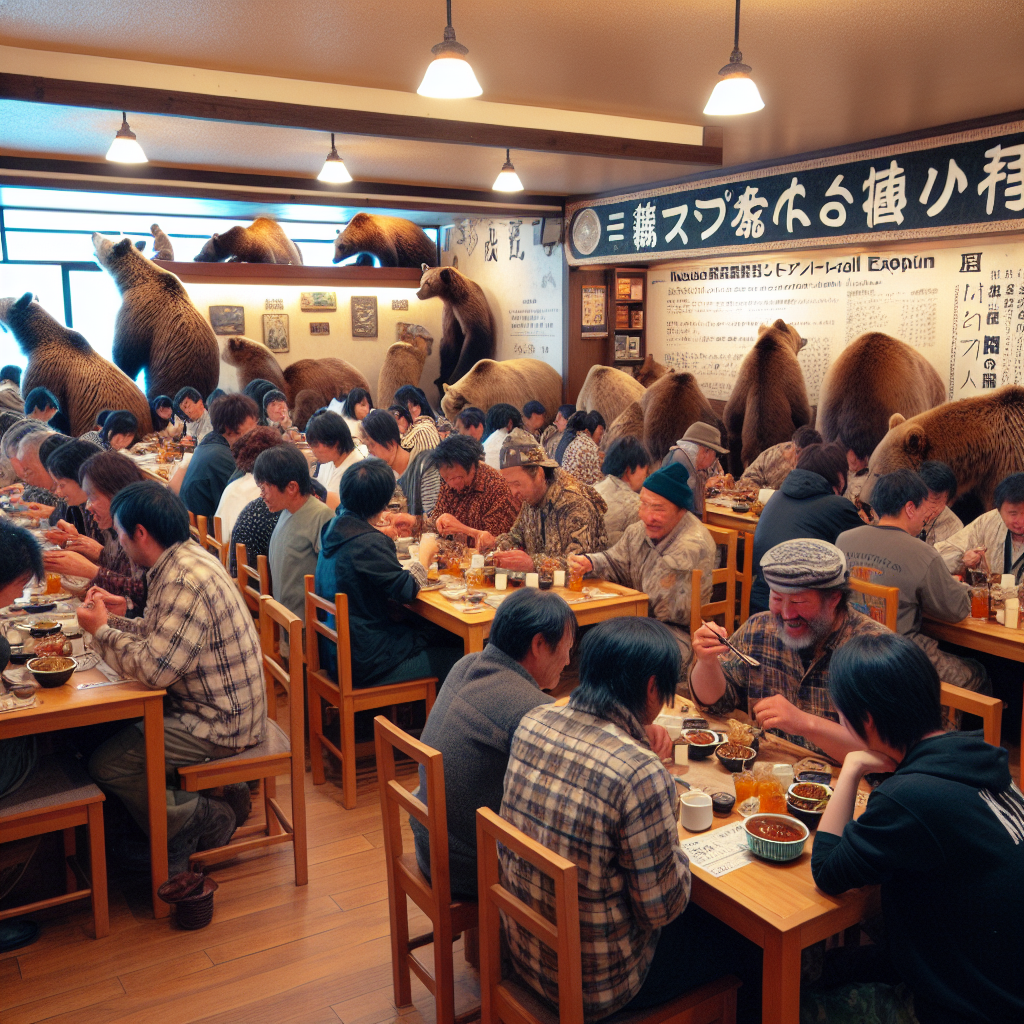Recently in Japan, with the frequent occurrence of bear sightings and incidents causing safety concerns in communities, a local “bear meat” cuisine restaurant operated by an active hunter has become a hot topic, attracting many curious people to come and try it, with the restaurant almost full of customers every day. The industry and relevant lawmakers have also begun to advocate for consuming legally hunted bears to help regulate the increasing bear population.
The restaurant called “Kinoko no Sato Suzukaen” is located in the Okuchichibu Mountains of Saitama Prefecture, known for crafting traditional local dishes using ingredients gathered from the mountains and rivers. The most eye-catching dish is the signature dish made from bear meat processed after hunting.
According to a report by Japan’s Asahi Television (ANN) on November 17th, the restaurant’s entrance is adorned with stuffed bear specimens, and the seats inside are always full. Many customers express that they are paying more attention to bear meat dishes due to the recent incidents of bear attacks.
A young visitor from Kanagawa said, “Since there is an opportunity to eat bear meat, I want to give it a try.” Another female visitor from China has visited three times already, and a regular customer in his nineties has a particular fondness for bear meat.
Some people even travel from Tokyo for three hours just to taste the flavor of bear meat. One of them described the meat as “completely devoid of any gamey taste, tender, and rich in flavor,” and expressed gratitude, saying, “Since they have to be hunted, allowing their lives to continue in the form of food makes one appreciative.”
In recent years, incidents of bear sightings in Chichibu City have been on the rise, with 37 reported last year and an increase to 57 as of mid-November this year. The restaurant’s vice general manager, who is also a hunter, Suzuki Koji, is responsible for handling the captured bear meat.
He explained, “The number of hunters decreases every year, but the number of wild animals keeps increasing. Without anyone maintaining the forests, bears and wild boars naturally come down from the mountains to forage. To restore balance, there needs to be moderate hunting and consumption.”
Suzuki pointed out that the quality of bear meat varies with the season and fat content. In summer when there is less fat, the meat is pinkish, while during periods of higher fat content, it appears in a deeper red color. The restaurant’s highlight “Stone Age Grill Set” features a platter of bear meat, deer meat, and wild boar meat, paired with grilled river fish seasoned with salt and local mountain vegetables, priced at approximately 5,500 Japanese yen (about 36 US dollars).
Although some local governments permit the culling of troublesome bears, most carcasses are abandoned due to difficulties in handling them. Suzuki lamented, “It’s such a waste. Almost every part of the bear can be utilized in our restaurant, from making soup with the bones to crafting accessories from teeth and claws. As long as the blood is properly drained, bear meat is not at all gamey.”
The topic of bear meat has even sparked discussions in the political arena. The leader of the “Wild Game Promotion Parliamentary Alliance” within Japan’s Liberal Democratic Party and former Prime Minister Shigeru Ishiba, after trying bear meat barbecue at a party meeting last Friday, urged for managing the bear population through “eating to regulate,” allowing wild animal resources to serve both local economic benefits and safety considerations.
✨For more information and to watch related videos, visit Asahi Television’s morning program “Good!Morning.”

